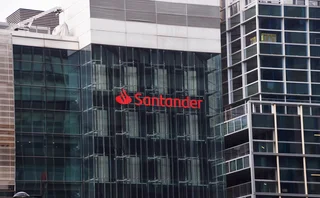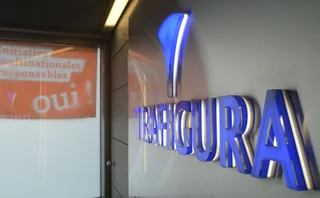
Buckle up for the bitcoin legal revolution
The brave new world of crypto derivatives needs new thinking for its legal framework, says D2LT CEO

Global finance is poised on the brink of its most exciting development for a generation – the industrial-scale embrace of distributed ledger technology (DLT) – the digital asset revolution.
Just 10 years ago, digital assets barely existed. Today they have a market value of $3 trillion.
And the extraordinary pace of innovation within cryptocurrencies and NFTs [non-fungible tokens] means it has now become imperative to build a credible and consistent legal framework for contracts governing trades with digital underlyings – a framework that does for digital what the Isda Master Agreement has done for derivatives and the realm of fiat transactions more broadly.
Because digital is not just another asset class that can be ‘bolted on’ to existing International Swaps and Derivatives Association documentation. Embracing crypto assets within mainstream financial transactions is akin to moving from a 2D to a 3D world – it raises an array of obvious legal questions but is likely also to create questions and challenges that have yet to be imagined or catered for.
It raises, for instance, the question of what happens if – or when – the price of a cryptocurrency cannot be agreed on a specific date, due to cyber terrorism or political intervention, say, or a technical problem with the distributed ledger.
If such scenarios mean the price agreed in a contract no longer makes sense, what is the recourse? Asset-referenced digital assets might become untethered from the underlying asset against which they are purportedly stabilised – for example, if the legal mechanism utilised to achieve this tethering fails – what then? Or might we need a legal opinion to assess the risk of that possibility?
And could close-out netting and collateral enforceability opinions be extended to such products in the same way they have expanded over the decades to include new derivatives structures and other instruments?
The ability to unlock, understand and address such ‘unknown unknowns’ must become a core part of the standardisation process for digital asset-based derivatives. Collaboration and commitment to tackle these issues is required not only from the traditional derivatives community but also from the wider financial space and must include non-financial, non-legal experts within the digital sphere.
This broader collaboration is essential to minimise the need for judicial intervention. Crypto questions are highly technical and specialised in nature. A judge is unlikely to have the expertise or experience required to resolve disputes at pace.
Indeed, resorting to the courts to address conflict within digital assets could be considered an inherent contradiction – the underlying digital asset philosophy is predicated on an aversion to formal structures and an embrace of self-enforcing measures. As such, it is important to consider the way to achieve constructive collaboration.
Brace yourself
It is also important to consider whether the existing structures that support the derivatives market can be digitised to better support this emerging asset class.
Isda’s determinations committee, which has been a major resolution mechanism for the derivatives market, gathers market participants, who can in turn draw on legal, tax, operational and other technical experts with an abundance of experience, to resolve issues very quickly and guide the appropriate outcome. Whether a similar mechanism’s focus on crypto assets would need or justify face-to-face, roundtable meetings is another question worthy of consideration.
And a similar question applies to the well-established Isda process for avoiding litigation by requesting market opinion from a range of dealers. Could it make sense to follow a similar manual approach to sourcing such views for virtual assets?
An alternative option could be to seek market resolution of such issues using DLT. A brave new world could require a bold new approach to embrace the full potential of the digital world and avert potential issues created by the differences between the digital and non-digital worlds.
It may be time to create a digitally enhanced process that automates and forces the determination process, for example, by embedding an automated workflow to poll the relevant experts – who are perhaps themselves determined through a self-learning algorithm – and feeds the responses into the system.
Or perhaps now is the time for the smart contract?
Isda’s work to develop legal standards to support the crypto derivatives market is an essential step. But it is also important that the market responds and takes this opportunity to push forward – to embrace digital technology – not only for crypto assets, but to provide operational benefits to the wider marketplace.
Akber Datoo is founder and chief executive officer of D2 Legal Technology. Jake Pope, a trainee solicitor at D2LT, provided research.
Only users who have a paid subscription or are part of a corporate subscription are able to print or copy content.
To access these options, along with all other subscription benefits, please contact info@risk.net or view our subscription options here: http://subscriptions.risk.net/subscribe
You are currently unable to print this content. Please contact info@risk.net to find out more.
You are currently unable to copy this content. Please contact info@risk.net to find out more.
Copyright Infopro Digital Limited. All rights reserved.
As outlined in our terms and conditions, https://www.infopro-digital.com/terms-and-conditions/subscriptions/ (point 2.4), printing is limited to a single copy.
If you would like to purchase additional rights please email info@risk.net
Copyright Infopro Digital Limited. All rights reserved.
You may share this content using our article tools. As outlined in our terms and conditions, https://www.infopro-digital.com/terms-and-conditions/subscriptions/ (clause 2.4), an Authorised User may only make one copy of the materials for their own personal use. You must also comply with the restrictions in clause 2.5.
If you would like to purchase additional rights please email info@risk.net
More on Comment
Op risk data: Mastercard schooled in £200m class action
Also: Mitsubishi copper crunch, TD tops 2024 op risk loss table. Data by ORX News
Transforming stress-testing with AI
Firms can update their stress-testing capability by harnessing automated scenario generation, says fintech advocate
Op risk data: Santander in car crash of motor-finance fail
Also: Macquarie fined for fake metals trade flaws, Metro makes AML misses, and Invesco red-faced over greenwashing. Data by ORX News
‘It’s not EU’: Do government bond spreads spell eurozone break-up?
Divergence between EGB yields is in the EU’s make-up; only a shared risk architecture can reunite them
Why there is no fence in effective regulatory relationships
A chief risk officer and former bank supervisor says regulators and regulated are on the same side
An AI-first approach to model risk management
Firms must define their AI risk appetite before trying to manage or model it, says Christophe Rougeaux
Op risk data: At Trafigura, a $1 billion miss in Mongolia
Also: Insurance cartels, Santander settlement and TSB’s “woeful” customer treatment. Data by ORX News
UST repo clearing: considerations for ‘done-away’ implementation
Citi’s Mariam Rafi sets out the drivers for sponsored and agent clearing of Treasury repo and reverse repo








